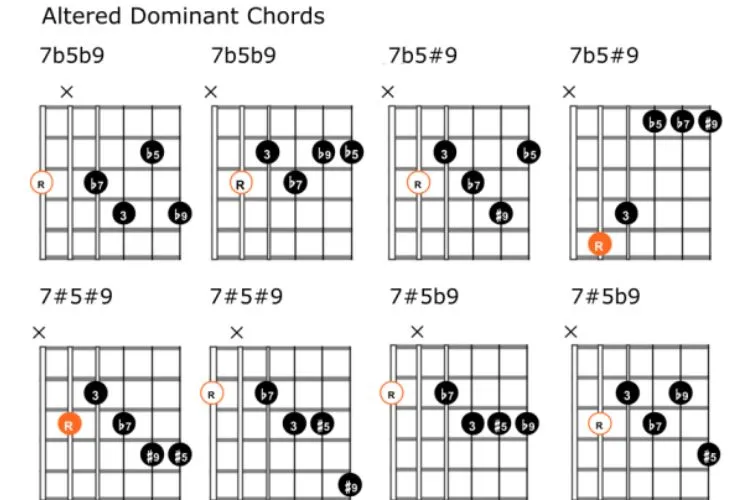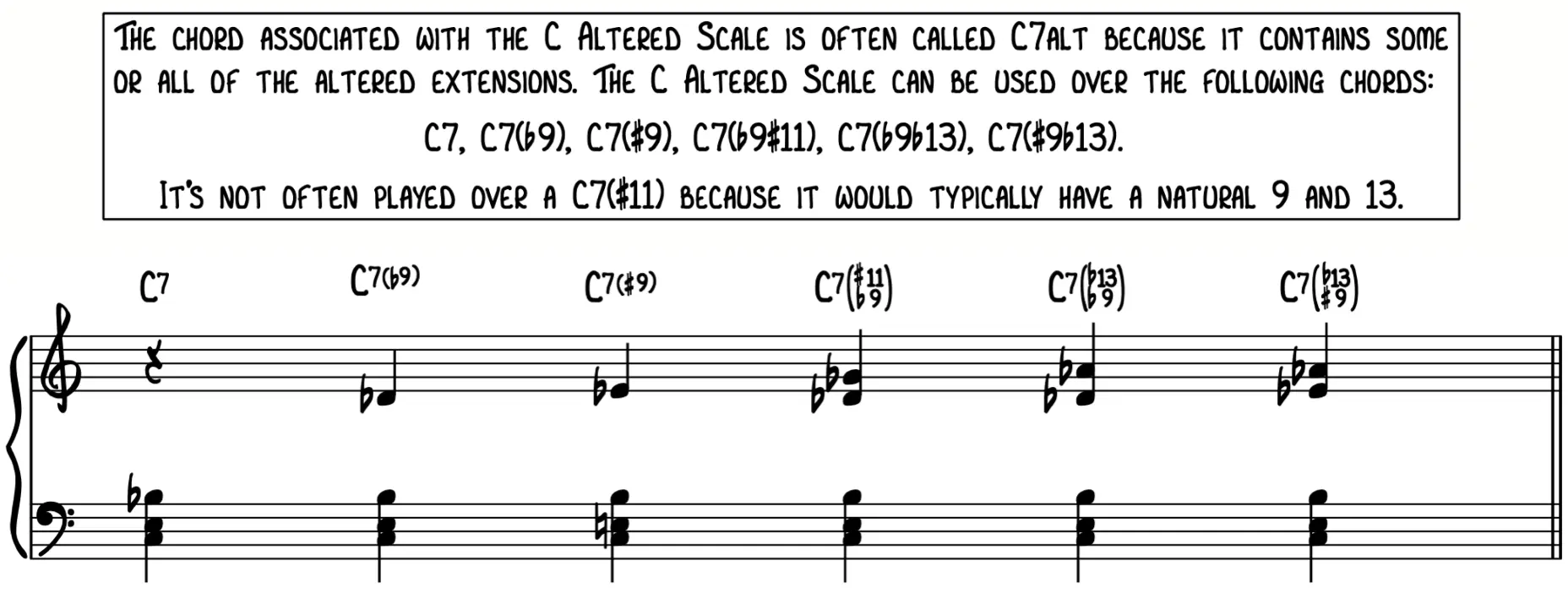In the realm of music, a myriad of mechanisms work in harmony to produce the melodies that resonate with our deepest emotions.
One such fascinating concept, often veiled in mystery for those beginning their musical journey, is that of altered chords.
But, do you know what is an altered chord for real?
Well, these are not just any chords; they are the magic beans of music theory that, when planted, sprout into captivating, unexpected harmonies that elevate the listening experience.

Altered chords stand as a testament to the creativity that defines music. Serving as a critical tool in the composer’s arsenal, they add depth, tension, and resolution, providing a sonic palette that can transform a simple melody into a complex, emotional experience.
Let’s dive deeper into the structure, types, and practical uses of altered chords, unraveling the enigma that surrounds them.
Contents
🎶What Is An Altered Chord?
The architecture of music is built on the foundation of chords, and altering these is akin to adding a new wing to an established edifice.
Altered chords derive their distinct sound from the modification – specifically, the raising or lowering – of one or more notes within a chord.
The alterations usually focus on the 5th and 9th notes of a chord. With the 5th, one can either decrease or increase its pitch or sometimes omit it entirely for a particular effect.
The 9th note usually undergoes a similar modification process, being either raised or lowered. These intricate adjustments are what give altered chords their unique sound and function within a progression.
🎶Types of Altered Chords
Like the various species in a vast ecosystem, altered chords come in several types, each adding its own flavor to the musical landscape.
Dominant Altered Chords

In the world of altered chords, dominant 7th chords altered contain a special place. By introducing alterations into these chords, musicians can imbue their compositions with a sense of anticipation and suspense, ultimately resolving into the tonic chord, thus satisfying the built-up tension.
Altered Chords in Jazz
Jazz, the genre synonymous with complexity and depth, relies heavily on altered chords to achieve its signature sound. These chords lay the groundwork for creating the genre’s hallmark harmonic richness and improvisational freedom.
The Role of the Altered Scale
Central to the creation and application of altered chords is the altered scale. This scale, with its unique structure, is a cornerstone in genres beyond just jazz, underpinning much of modern music’s harmonic complexity.
🎶Understanding Altered Chords in Practical Use
Theoretical knowledge of altered chords illuminates their structure and variety, but seeing them in action brings their importance into full view. Let’s explore their application in music through an intuitive understanding and a concrete example.
In songwriting and composition, altered chords often make fleeting appearances. They enter a chord progression to introduce tension, a musical conflict that cries out for resolution.
This tension-and-release mechanism is crucial in music, mirroring the emotional highs and lows of human experience.
Particularly in jazz, altered chords flourish. They paint the songs with broad strokes of tonal color, creating a sonic landscape that beckons listeners into its depths.
Their use is both an art and a science—requiring a deft understanding of music theory, coupled with the creative intuition to apply them in emotionally compelling ways.
🎶Breaking Down Altered Chords Further
Altered Chord Notation and Interpretation
Altered chords bring a unique flavor to music, and their notation in sheet music serves as the key to unlocking this special sound.
Typically, altered chords are indicated by symbols like “alt”, “♯” (sharp), “♭” (flat), or specific annotations like “♯5” and “♭9” following the chord symbol.

These notations pinpoint which notes within the chord are altered. Interpreting these symbols requires familiarity with chord structures and the ability to adjust the specific notes accordingly.
For instance, a G7♯5 chord symbol tells musicians to play a G dominant 7th chord but with a raised 5th scale degree.
Building Altered Chords
Constructing altered chords starts with a basic understanding of the chord you intend to alter, commonly a dominant 7th chord due to its unstable and tense nature, thus serving as fertile ground for alteration.
To build an altered chord, select the note (often the 5th or 9th) you wish to alter. For a more dissonant sound, you might raise or lower these notes by a semitone.
Taking our G7 chord example, altering the 5th would involve playing a D♯ (for a G7♯5) or a D♭ (for a G7♭5), changing the chord’s color and tension level. Through these steps, altered chords can be created to add depth and intrigue to musical compositions.
🎶Frequently Asked Questions (FAQs)
On the piano, an altered chord follows the same principle as on other instruments. It involves the strategic alteration of the 5th or the 9th note (among others), which changes the chord’s color and context within a progression.
In jazz, altered chords are pivotal for their ability to add tension, complexity, and a sense of unpredictability to compositions. They prepare and resolve into subsequent chords, enriching the harmonic texture of the piece.
Altered chords and dominant 7th chords share similarities but are distinct entities. A dominant 7th chord becomes an altered chord through the specific alteration of its notes, extending its harmonic function and texture.
In chord notation, “alt” signifies that an alteration has occurred within the chord, indicating that one or more of its notes have been raised or lowered, thus deviating from its original structure.
Recognizing an altered chord by ear requires refined listening skills and a solid grasp of music theory. It’s often the chord that introduces a distinct tension or color, momentarily diverting the harmony before returning to more familiar terrain.
Conclusion
It’s evident that altered chords are not merely a footnote in the vast chapters of music theory; they are a key paragraph in its continuing narrative.
They serve as a bridge between the conventional and the avant-garde, pushing the envelope of melodic and harmonic possibilities.
In the panorama of modern music, altered chords are both a throwback to the complex arrangements of jazz and a forward leap into the experimental harmonies of contemporary genres.
Their contribution to music’s evolution is undeniable, offering musicians and composers a powerful tool for emotional and sonic exploration. As we unravel their mysteries, we gain not just technical knowledge but a deeper appreciation for the art of music itself.
